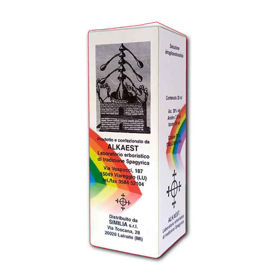Customer question:
What causes Hodgkin lymphoma? Anonymous customer's question
Pharmacist's answer:
The causes of Hodgkin lymphoma (HL) are not fully understood, but certain factors are associated with a higher risk of developing this disease. Hodgkin's lymphoma is a type of cancer affecting Reed-Sternberg lymphatic system cells.
Some risk factors for Hodgkin lymphoma include:
- Age: Hodgkin's lymphoma is most often diagnosed in two age groups: adolescents and young adults (ages 15-40) and people over 55. The risk increases with age.
- Gender: Men have a slightly higher risk of developing Hodgkin lymphoma compared to women.
- Genetic factors: if a person has a family history of Hodgkin lymphoma, the risk of developing this disease increases. However, most cases of Hodgkin's lymphoma are sporadic and unrelated to heredity.
- Epstein-Barr virus (EBV) infection: infection with this virus is associated with an increased risk of developing Hodgkin lymphoma, especially in some geographic regions.
- Weakened immune system: A weakened immune system, which may be the result of HIV infection or receiving immunosuppressive drugs after an organ transplant, increases the risk of Hodgkin lymphoma.
- Previous treatment: previous treatment with high doses of radiation or chemotherapy for other types of cancer can increase the risk of developing Hodgkin lymphoma.
- Other diseases: certain other diseases, such as autoimmune diseases, increase the risk of Hodgkin lymphoma.
- Exposure to certain chemicals: Certain chemicals, such as pesticides and solvents, have been associated with a slightly increased risk of Hodgkin lymphoma.
Although these factors are associated with a higher risk of Hodgkin's lymphoma, it is essential to emphasize that most people with these factors do not develop Hodgkin's lymphoma, and most cases of this disease have no known causal relationship.
How common is the diagnosis of Hodgkin's lymphoma?
Hodgkin's lymphoma (HL) is relatively rare compared to non-Hodgkin's lymphoma (NHL). It accounts for only a tiny proportion of all lymphoma cases in most countries. In developed countries where advanced diagnostic and medical services are available, the incidence of Hodgkin's lymphoma is lower than in some other parts of the world. With Hodgkin's lymphoma, a particular age distribution can be observed, as it occurs most often in young adults, especially between the ages of 15 and 40 and people over 55.
According to data from the World Health Organization (WHO) and other epidemiological studies, the incidence of Hodgkin's lymphoma ranges from approximately 2 to 3 cases per 100,000 population annually. Despite its rarity, Hodgkin's lymphoma is usually well-curable, especially if it is diagnosed at an early stage and if treatment is started on time. Advances in the development of treatments such as chemotherapy, radiotherapy, and immunotherapy have contributed to the high survival rate of patients with Hodgkin's lymphoma.
How long does treatment for Hodgkin's lymphoma last?
The duration of treatment for Hodgkin's lymphoma depends on several factors, including the stage of the disease, the specific subtype of Hodgkin's lymphoma, the patient's general health, the response to treatment, and the treatment plan chosen. Standard approaches to treating Hodgkin's lymphoma include chemotherapy, radiation therapy, and immunotherapy. In some cases, a stem cell transplant may also be part of the treatment. The treatment of Hodgkin's lymphoma is often carried out in several stages.
Chemotherapy is usually the first line of treatment for Hodgkin lymphoma. The duration of chemotherapy cycles and the total duration of chemotherapy may vary depending on the specific treatment protocol. For example, some protocols include 4 to 6 cycles of chemotherapy, each cycle lasting several weeks. The total duration of chemotherapy treatment can be several months.
In some cases, radiation therapy is also performed after chemotherapy, significantly if specific lymph nodes are affected. The duration of radiotherapy depends on the extent of the disease in affected areas and several sessions. Immunotherapy, especially the drug brentuximab vedotin (Adcetris), can be used to treat certain forms of Hodgkin's lymphoma. The duration of immunotherapy can vary, but it mainly depends on the patient's response to the treatment and the treatment plan.
In some cases, especially in relapsed or high-risk patients, a stem cell transplant may be performed. The procedure involves several phases, including preparation for the transplant, high-dose chemotherapy, and stem cell transplantation. The whole process can take several months. It is important to emphasize that each case of Hodgkin's lymphoma is unique, and as a result, the treatment is adapted to the patient's individual needs. Treatment duration and response to treatment can vary, so a qualified oncologist must manage treatment.
Interesting reading: Non-Hodgkin lymphoma
Interesting reading: Elevated lymphocytes













